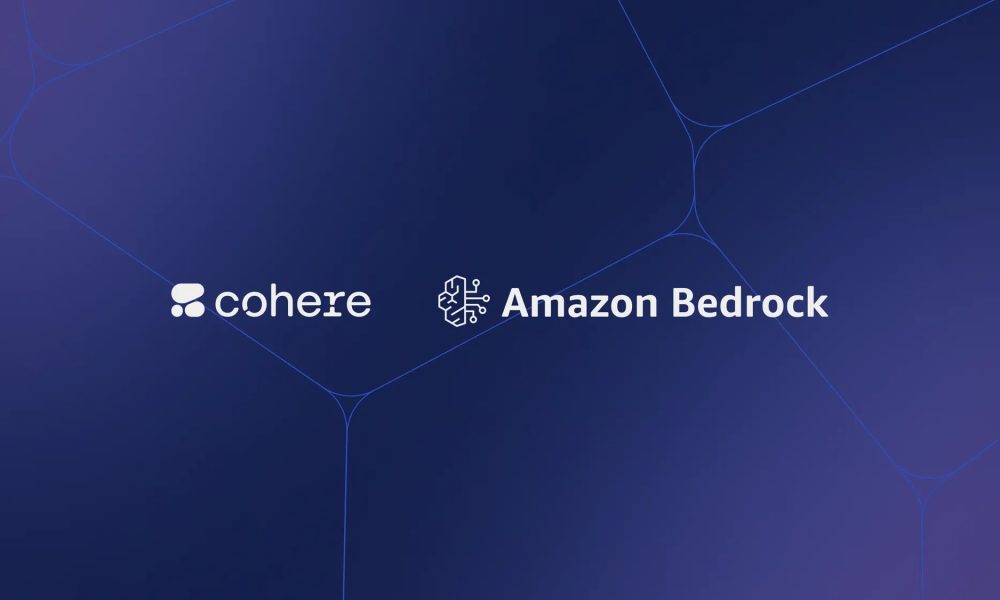Month: April 2024
Cohere’s Command R Model Family is Now Available In Amazon Bedrock
Today, we’re excited to announce that our latest Command R model family is now available in Amazon Bedrock. We look forward to continuing our partnership with AWS to provide enterprise customers best-in-class AI solutions for their business needs to unlock powerful productivity and efficiency gains.
Supercharging our in house CRM with AI Automation
Supercharging our in house CRM with AI Automation
At Blotout, which runs multiple divisions and embedded partnerships, our internal CRM system on how we reach to our B2B customers serves as a central repository for all customer interactions for partner introductions, and cross selling. As our business scaled, we identified critical inefficiencies in our data management processes that necessitated an automated solution. This case study outlines our methodology, implementation, and measurable outcomes from deploying an automated data validation, cleanup, and enrichment system across our CRM segments.
Business Context and Challenges
Our CRM architecture comprises three distinct data segments:
1. 1P Data (Blotout Native Customers)
- Core customer base
- Primary focus for retention and expansion
2. 2P Data (Embedded Partner Customers)
- Acquired through strategic partnerships
- Significant cross-sell potential
3. 3P Data (Prospects)
- Targeted accounts for customer acquisition
- Requires continuous validation and enrichment
Identified Pain Points
- Data Completeness: 62% of 1P/2P records lacked firmographic data (revenue, headcount, funding)
- Lead Quality: 28% of 3P contacts contained invalid or outdated information
- Operational Efficiency: Sales teams spent 15-20 hours weekly on manual data cleanup
Need to Hyper Segmented Outreach
As we scaled our different product lines, we needed to hyper personalize companies that were a fit with our direct customer base, or partner base, or outbound but with a different core ICP within the customer organization. We felt going inhouse would save us a ton of agency cost and learn how we can scale partners in our ecosystem and our software in partner ecosystems while we grow the overall pool. We are also sharing our CRM automation approaches with partners, unlike tools like CrossBeam or AISDR that are expensive and only solve parts of the problem.
Solution Architecture
1P/2P Data Enrichment Framework
Data Sources:
- Customers.ai for company financials
- Seamless.ai for commerce indicators
- Internal CRM data

Technical Implementation:
- n8n workflows for API integrations
- Custom validation rules for data consistency
- Automated CRM field updates
3P Data Validation System
Process Flow:
- Initial contact import
- Multi-point validation (email format, phone syntax, domain verification)
- Automated enrichment (job titles, seniority levels)
- Deduplication and merge processing
- Final scoring and routing
Business Impact and ROI
Quantitative Outcomes
1P/2P Segment:
- Increase in identified expansion opportunities
- Improvement in cross-sell conversion rates
- Reduction in account research time
3P Segment:
- Decrease in bounced emails
- Improvement in lead-to-meeting conversion
- Increase in sales productivity
Operational Efficiency:
- Reduction in manual data entry
- 60 hours/month saved in data cleanup
Strategic Advantages
- Customization: Proprietary algorithms for our specific business model
- Real-time Processing: Near-instantaneous data updates
- Scalability: Handles 300% volume growth without additional resources
- Cost Efficiency: 40% lower TCO compared to commercial solutions
Future Roadmap
1. Predictive Analytics Layer
- Lead scoring models
- Churn risk indicators
2. Enhanced Enrichment
- Technographic data integration
- Intent signal monitoring
3. Process Expansion
- Automated campaign triggers
- AI-assisted contact recommendations
Conclusion
Our CRM automation initiative has transformed raw data into a strategic asset, driving measurable improvements across sales productivity, marketing efficiency, and revenue growth. Our internal solution’s flexibility ensures continued value as our business evolves.
Bonus Upside
Our learnings eventually drove us to understand the complexities of CRM, that eventually enabled us to understand the basis for simplifying internal CRM systems in the AI era where AI can hyper personalize using tools like n8n but the core of the CRM needs to be hyper simplified and connected to traffic drivers. These learnings informed our separate product smblead.ai, which we’re moving from Alpha to Beta and the codebase between our own sales CRM and SMBLead.ai is shared.
In our next post, we’ll explore “The AI-Powered CRM: How We’re Scaling 1:1 Personalization for Every Customer”

